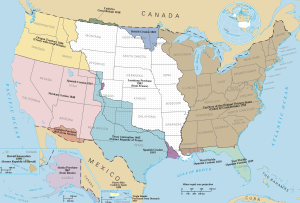US History concept chart major concepts & themes across US History
US History concept chart major concepts & themes across US History
Objectives:
- to help students to
- associate timelines with events, persons, themes & concepts
- associate presidents with timelines, themes & concepts
- identify timelines with BIG IDEAS across periods of US history
- find connections and common themes across US history
- easily find relevant details for larger comprehension
- to help teachers to
- quickly review US History content for lesson planning
- provide students with easy and complete reference source for US history
Click EXPAND for a note for mobile phone users
- these timeline & concept charts use tables in order to connect ideas, timelines, and major concepts
- tables are not mobile-friendly (they do not wrap to a single column)
- when these charts are complete, we will in the future convert the charts to mobile-friendly format as an alternative file
- we encourage you to use a tablet or larger monitor in order to see the charts here
Index
Page structure & format guide
U.S. History course pages:
Concept & themes chart objectives[edit | edit source]
Develop timeline & periods awareness[edit | edit source]
- timeline awareness develops ability to recall events and persons more readily
- periods awareness develops ability to draw connections across US history
Thematic overview of US history[edit | edit source]
- theme-based learning develops ability to connect and assess different periods
- theme-based learning develops conceptual skills and awareness
Understanding & connecting historical times, persons, places, and events in US history[edit | edit source]
- thematic and periodization helps US History students:
- relevancy and connections across all periods of US history
- content retention
- causal and conceptual understanding
- AP US History (APUSH) test is based upon primary source documents
- success on the test includes ability to:
- identify time, theme, and issue based upon a date
- connect, compare & contrast similar periods to primary source documents
- see also
Periods, timeline, and major concepts[edit | edit source]
| PERIOD / TIMELINE | Major Events, Concepts & Themes | Notes & connections: details of issues, concepts, themes & events | ||||||||||||||||||||||||||||||||||||||||||||||||||||||||
|---|---|---|---|---|---|---|---|---|---|---|---|---|---|---|---|---|---|---|---|---|---|---|---|---|---|---|---|---|---|---|---|---|---|---|---|---|---|---|---|---|---|---|---|---|---|---|---|---|---|---|---|---|---|---|---|---|---|---|
|
BIG IDEAS
Causality
Connections
Constitutionalism
|
"The American Experience"[edit | edit source]
European colonialism[edit | edit source]
click EXPAND for chart of types/ purposes of colonial charters/ establishment
Push-pull factors[edit | edit source]Push factors from England[edit | edit source]
Push factors to American colonies[edit | edit source]
American colonial self-identity as British citizens[edit | edit source]
| ||||||||||||||||||||||||||||||||||||||||||||||||||||||||
Founding documents & political philosophies[edit | edit source]
| PERIOD / TIMELINE | Major Events, Concepts & Themes | Notes & connections: details of issues, concepts, themes & events |
|---|---|---|
|
Timeline
|
BIG IDEAS
Democracy
Republic
adsf adsf |
Enlightenment ideas[edit | edit source]
Madison's Federalist no. 10[edit | edit source]
faction & disagreement[edit | edit source]
Declaration of Independence[edit | edit source]
Constitution[edit | edit source]
Bill of Rights[edit | edit source]
Electoral College[edit | edit source]
|
Cultural, social & political intersections[edit | edit source]
| PERIOD / TIMELINE | Major Events, Concepts & Themes | Notes & connections: details of issues, concepts, themes & events |
|---|---|---|
| BIG IDEAS |
self-governance/ self-government[edit | edit source]
private v public lives of Americans[edit | edit source]slavery[edit | edit source]
"frontier" western expansion[edit | edit source]
religious awakenings[edit | edit source]
politics & democracy[edit | edit source]
reform movements[edit | edit source]
|
Economic concepts & themes[edit | edit source]
| PERIOD / TIMELINE | Major Events, Concepts & Themes | Notes & connections: details of issues, concepts, themes & events |
|---|---|---|
|
BIG IDEAS
18th century colonial economies & trade up to 1763
17th century colonial economies & trade after French-Indian War (1763)
|
economics[edit | edit source]
panics, recessions, depressions[edit | edit source]
to do/ sort[edit | edit source]
distance and time
land grants act 1850s overseas wars foreign involvement nicauragia wwi cold war women's rights in west b/c of fewer women in the population
|
Territorial & commercial expansion[edit | edit source]
| PERIOD / TIMELINE | Major Events, Concepts & Themes | Notes & connections: details of issues, concepts, themes & events |
|---|---|---|
|
1763 Treaty of Paris
1783 Treaty of Paris
1791 Vermont Republic
1802 Louisiana Purchase
1815 Treaty of Ghent
1818 Treaty of 1818
1819 Adams-Onis Treaty
1842 Webster–Ashburton Treaty
1846 Oregon Treaty
1848 Treaty of Guadalupe Hidalgo
1853 Gadsden Purchase
1867 Alaska Purchase
1898 Treaty of Paris
1898 Annexation of Hawaii
|
BIG IDEAS What does it MEAN?
Push & pull factors
Colonial expansion
Exploration, fur trade, land
Northwest Ordinance of 1787
Manifest Destiny
Civil War impact
Impact of technologies
Overseas expansion & acquisitions
Expansion via acquisition from European powers
Expansion via acquisition or war with Native Americans
Twentieth Century US overseas interventions
|

US territorial expansion[edit | edit source]

Acquisition or takeover of Native American lands[edit | edit source]
Pacific Island and other acquisitions[edit | edit source]
|